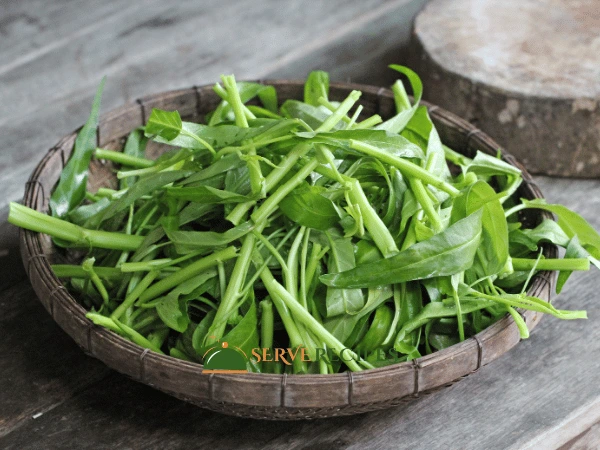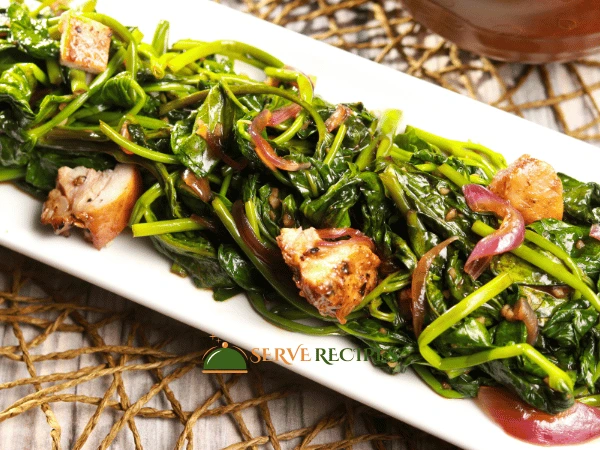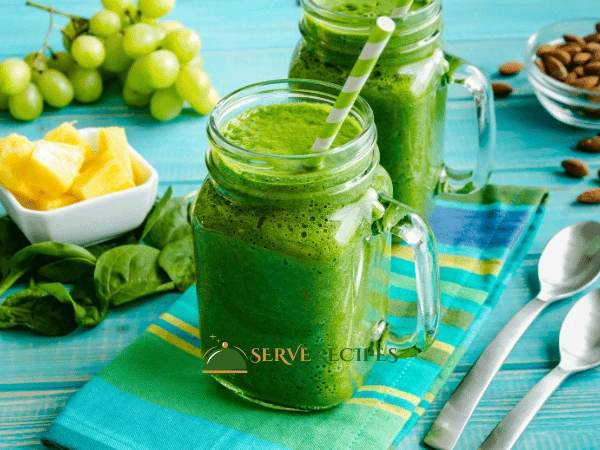Two everyday superfoods that come to mind are quinoa and kale. However, because of its nutritious value, kangkong deserves equal attention. Known by some as water spinach, this leafy green is a staple in Southeast Asian cuisine. It’s rich in essential nutrients and versatile as well. Let’s look at the nutritional facts of kangkong and why it should be a mainstay in your diet.
What is Kangkong?

The scientific name for kangkong is Ipomoea aquatica, a semi-aquatic plant. Tropical and subtropical regions are suitable for its growth. Grown extensively in the Philippines, Thailand, Malaysia, and Indonesia, Kang Kong is renowned for its extensive green leaves and delicate stems. It is also known as water morning glory or swamp cabbage and is often added to soups, stir-fried, or steamed.
Nutritional Profile of Kangkong
A vegetable high in vitamins, minerals, and antioxidants, kangkong is low in calories. This is a thorough analysis of its nutritional makeup:
- Low calories: About 11 calories are found in one cup (56 grams) of raw kangkong. It’s perfect for managing body weight.
- Rich in Vitamin A: One serving of kangkong supplies more than 60% of the daily required consumption of Vitamin A, making it an excellent source of the vitamin. For the skin, immune system, and eyes to remain healthy, vitamin A is necessary.
- High in Vitamin C: Kangkong provides about 35% of your daily need for Vitamin C in a single dose. This potent antioxidant strengthens the immune system, protects cells from harm, and encourages healthy skin.
- Packed with Iron: Iron is necessary for synthesizing hemoglobin, the protein found in red blood cells that transports oxygen throughout the body, and kangkong is a good source of this mineral. This makes it especially advantageous for those who are susceptible to anemia.
- Calcium for Strong Bones: A serving of Kangkong provides about 77 mg of calcium, which helps to maintain healthy teeth and bones. Osteoporosis and other bone-related issues can be avoided with regular consumption.
- Folate: Kangkong has a large quantity of folate, a vitamin B essential for DNA synthesis and repair, and is particularly healthy for pregnant women.
- Fiber Content: Kangkong’s high dietary fiber content can aid in blood sugar regulation, encourage sensations of fullness, improve digestion, and aid in weight control.
- Potassium Maintaining blood pressure, muscles, and nerve functioning is typically necessary. Kangkong’s potassium reduces blood pressure and supports heart health.
Health Benefits of Kangkong
It should come as no surprise that Kangkong has a rich nutritional profile and provides a host of health advantages, such as:
- Boosts Immune System: The body is shielded against infections and diseases by the solid immune system provided by the high concentrations of vitamins A and C in kangkong.
- Promotes Eye Health: It is well known that vitamin A helps keep eyes healthy, lowers the chance of cataracts, and keeps night blindness at bay.
- Supports Heart Health: Kangkong’s potassium and fiber content lower cholesterol and regulate blood pressure, benefiting cardiovascular health.
- Aids in Digestion: The dietary fiber in kangkong aids in healthy digestion by preventing constipation and fostering gut health.
- Enhances Skin Health: Vitamin C, in particular, and other antioxidants found in kangkong help shield the skin from oxidative stress, resulting in a more youthful, healthy complexion.
- Prevents Anemia: Given its high iron content, kangkong is particularly useful in preventing iron deficiency anemia in populations where the condition is common.
For more on the health benefits of Kangkong, check out this detailed guide on the nutritional value of leafy greens.

How to Incorporate Kangkong into Your Diet
Kangkong is highly adaptable and can be prepared in a variety of ways. Here are some suggestions for using this vegetable, which is high in nutrients, in your meals:
- Stir-Fry: A quick stir-fry with garlic, soy sauce, and a touch of chili makes for a delicious side dish.

- Soups: Add Kangkong to soups and broths for added flavor and nutrients.

- Salads: Use raw or lightly blanched Kangkong leaves in salads for a fresh, crunchy texture.

- Smoothies: Blend Kangkong leaves into green smoothies for an extra nutritional boost.

Conclusion
A staple in any diet, kangkong is a nutritious powerhouse. Because of its abundance of vitamins, minerals, and antioxidants, it is a tasty garnish for a variety of meals but also a valuable tool for preserving general health. Kangkong is an excellent option to strengthen your heart health, increase your immune system, or enjoy a low-calorie, high-nutrient vegetable.
Accepting this unassuming leafy green will allow you to enhance your meals with colorful flavors and reap many health advantages. So remember to check out Kangkong the next time you’re in the market—it’s a superfood hidden in plain sight.